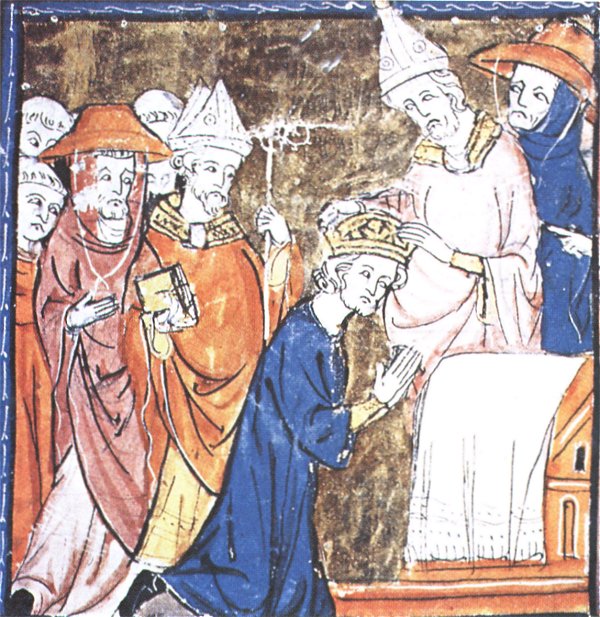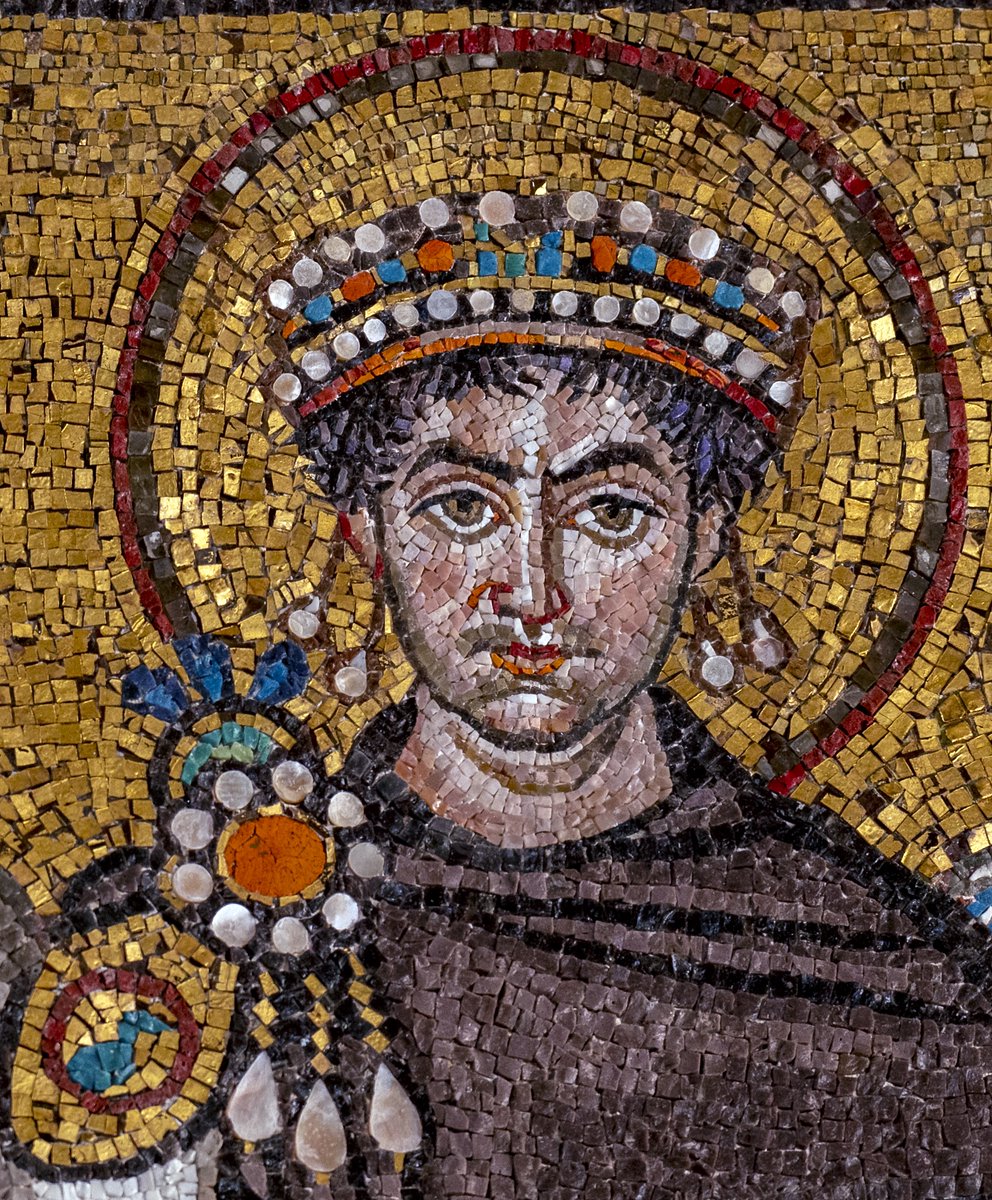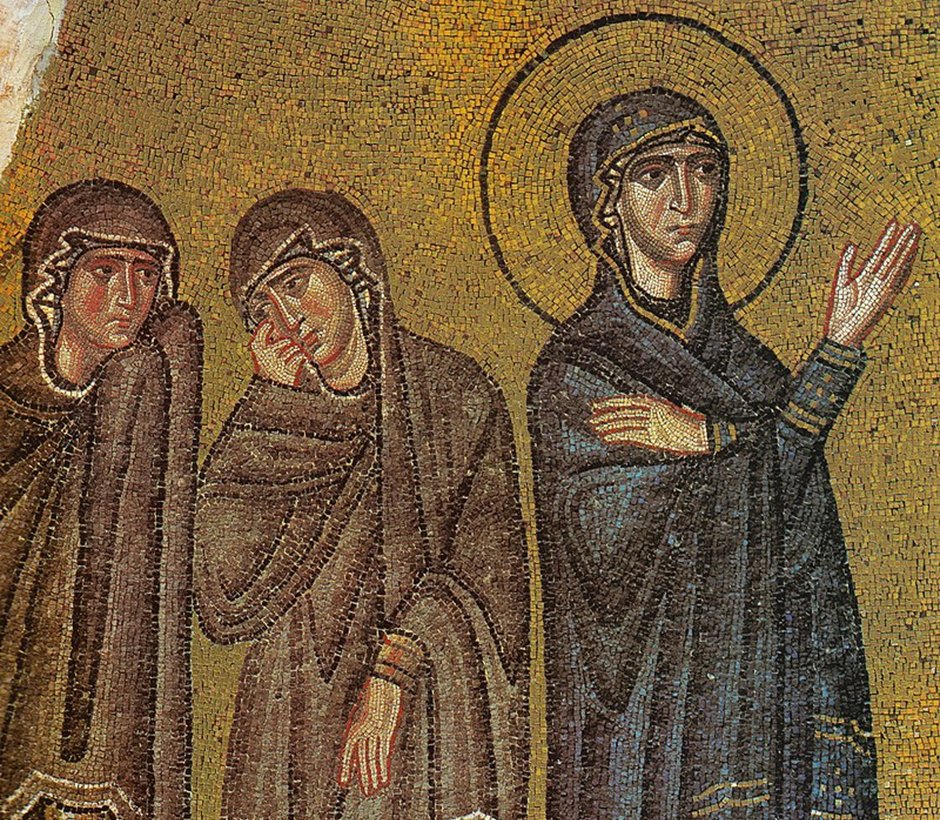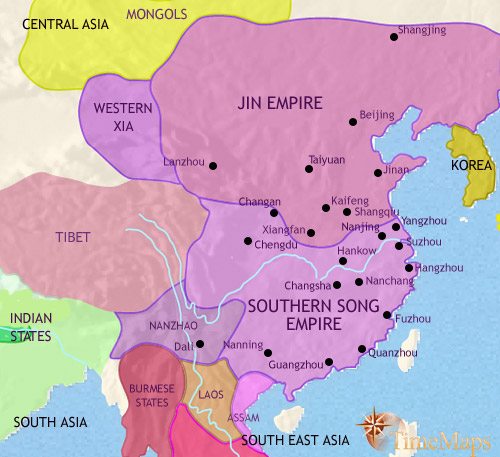Discover and read the best of Twitter Threads about #byzantine
Most recents (24)
How I wrote #BelisariusAndAntonina Part 20: If people are familiar with Belisarius, they know about the triumphant first portion of his career. The ending of his career is rather less known. Today, Belisarius’ last stint as General of the East. 🧵 #History #Book #Byzantine 

During his first stint as General of the East (529-531), Belisarius fought the Persians in Mesopotamia. During his second stint (532?-542), he overran North Africa and Italy. But, surprise, he also had a third stint as General of the East, which began in 549. 

In Spring 549, Belisarius returned to Constantinople after his disappointing second campaign in Italy. Procopius records the surprise appointment that came next: Justinian “appointed him commander of the imperial guards in his capacity as General of the East.”
How I wrote #BelisariusAndAntonina Part 19: The most damaging allegation made against Antonina is that she had a sexual affair with her adopted son. This would make her a practitioner of adultery, incest, and maybe also pedophilia. Is it true?? 🧵 #History #Book #Byzantine 

In the Secret History, Procopius alleges that Antonina was “smitten with desire and driven by erotic passion” for her adopted son, Theodosios, who was perhaps a young teenager at the time he was adopted. 

According to the story, Antonina first seduced Theodosios in Carthage in late 533 or early 534, and carried on an on-and-off affair with him for years until the young man’s untimely death ca. 542.
How I wrote #BelisariusAndAntonina Part 18: No surviving source records the date of the wedding of Belisarius and Antonina, but it kind of matters for a book about their marriage! Today I discuss how I calculated their wedding year. 🧵 #History #Book #Byzantine 

We start with the one solid date we have: Procopius first attests that Belisarius and Antonina were husband and wife in the context of their departure from Constantinople to North Africa in June 533. This provides a terminus ante quem (limit before which) for their wedding.
However, I believe Belisarius and Antonina married well before 533. For me, the key evidence is the likely ages of their children Photios and Ioannina.
Justinian and Belisarius: how was their relationship? Typically, historians emphasize animosity and conflict between the two elite Romans. I think this approaches their relationship from the wrong angle. Read on if interested. ⬇️ #Roman #Byzantine #History 



Travel in the ancient and medieval Roman world came with a twist: trips of greater distance could be accomplished in less time than trips of shorter distance depending on certain variables. Read this 🧵 for the general rules of Roman travel time. #Roman #Byzantine #History 

Belisarius and Antonina were extremely well-traveled individuals. Between 528 and 548, for instance, Belisarius was away from Constantinople for part or all of 19 of these years. Antonina was away from Constantinople for part or all of 14 of these years. #Byzantine #History 



The destinations of their travels are generally well-known: the Roman East (particularly Roman Mesopotamia and Syria), North Africa, and Italy. Of all these locations, they both spent by far the most time in Italy (about 11 years). 

Of course none of this travel was for pleasure. It was all in the service of Belisarius' military career. In the majority of these years, Belisarius held the title of General of the East, even while fighting in the West.
Ressourcement: A Movement for Renewal in Twentieth-Century Catholic Theology - Edited by Gabriel Flynn and Paul D. Murray 



Sometime in December 533, Belisarius fought his second major battle against the Vandals of North Africa. Let's take a close look at the Battle of Tricamarum to see how Belisarius won this battle and with it the war. #BelisariusAndAntonina #Byzantine #History 

First, for context, I gently remind you that in September I tweeted all about Belisarius' arrival in North Africa and the beginning of his campaign against the Vandals. If you want to review, this is the thread of threads that collects it all together:
December 9: #OTD in 536, Belisarius and the Roman army entered Rome. It was a remarkable moment. As the historian Procopius wrote, "after a space of sixty years Rome again became subject to the Romans." Some thoughts in this 🧵 #BelisariusAndAntonina #Byzantine #History 

First, a brief reminder of the context: Belisarius had landed in Sicily in summer 535. The island and all of Italy were part of the Kingdom of the Ostrogoths. The emperor Justinian charged Belisarius with restoring Roman authority to these lands. 

After occupying Sicily in 535, Belisarius crossed the Strait of Messina into the toe of Italy in 536. Most of southern Italy submitted immediately to the Roman army, but Naples held out until it was captured, probably in late November 536.
December 5: #OTD in 562, Belisarius suffered his last disgrace at the hands of an aging Justinian. Belisarius, by this point retired for more than a decade, was implicated in a plot to murder the emperor. Was he guilty? A 🧵 #BelisariusAndAntonina #Byzantine #History 



In November 562, three men devised a conspiracy to assassinate Justinian: Ablabios, a musician, Marcellos, a banker, and Sergios, the nephew of an important senator named Aitherios. This was not exactly a roster of the elites of the elites of Constantinopolitan society. 

The plot, which was to stab Justinian to death in the evening while he sat in the palace triclinium (dining room), was amateurish and quickly detected by palace guards, who arrested all three men before they came close to ambushing the emperor.
Our new paper: »The sun was darkened for 17 days« (AD 797). An Interdisciplinary Exploration of Celestial Phenomena between #Byzantium, #Charlemagne, and a #VolcanicEruption. #MedievalWorlds 17/2022: doi.org/10.1553/mediev… (1/9)
#Byzanzforschung, @imafo_oeaw
#Byzanzforschung, @imafo_oeaw

The blinding of the #Byzantine Emperor Constantine VI in #Constantinople in August 797 CE and his overthrow by his mother Eirene was used as legitimation for the #coronation of the Frankish King #Charlemagne as emperor of the Romans on 25 December, 800. (2/9)
@imafo_oeaw

@imafo_oeaw


In #Byzantine sources, Constantine VI´s #blinding was linked with a spectacular #celestialmanifestation of divine disapproval: “The #sun was darkened for seventeen days and did not emit its rays so that ships lost course and drifted about.” (3/9)
#Byzanzforschung
#Byzanzforschung

On or around this date in 536, the Roman army of Belisarius stormed the city of Naples and put many to the sword, ending a 21 day siege and opening up the road to the Eternal City. Why such a bloody resolution to this siege? Read on. #Roman #Byzantine #History #Italy 🇮🇹 

When Belisarius and the Roman army arrived before Naples, they were riding a string of successes. Cities across Sicily and southern Italy had submitted immediately and willingly to the Roman force, as I described in the quoted tweet below.
A map of administrative divisions of the Eastern Roman #Empire and number of their cities.
The #Byzantine geographer Hierocles listed 912 cities in the Empire among the 64 Eparchies.
(Zoom in for better reading)
#Archaeology
The #Byzantine geographer Hierocles listed 912 cities in the Empire among the 64 Eparchies.
(Zoom in for better reading)
#Archaeology

Synecdemus was written during the reign of Justinian but prior to 535 AD. It is an unparalleled source of information for the geography of the Byzantine world.
The map:awmc.unc.edu/awmc/applicati…
The map:awmc.unc.edu/awmc/applicati…
Hierocles separated the administrative divisions "under the Basileus of Romaion ruled from Constantinople" from the "administrative divisions under Rome (city)"
(The list) recogito.pelagios.org/document/9xeul…
(The list) recogito.pelagios.org/document/9xeul…
This week Americans celebrate Thanksgiving. How did a sixth-century Roman give thanks? One way was a charitable gift that commemorated the event for which the donor was grateful. In this 🧵, two examples: Belisarius and Theodora. #Roman #Byzantine #History #Thanksgiving 



1) Perhaps in 537, Belisarius gifted the See of St. Peter, via Pope Vigilius, a jewel-encrusted gold cross weighing 100 pounds. A clue that this was a thanks offering is that the cross was inscribed with the details of Belisarius' recent victory over the Vandals (533-534). 

This cross sadly does not survive today, but a processional gold cross from a later era (ca. 1000) may give some indication of what it looked like. This beauty is held in the @metmuseum:
metmuseum.org/art/collection…
metmuseum.org/art/collection…

November 14: #OTD in 565, the emperor Justinian I died at the ripe age of 83, having reigned 38 years. On this anniversary of his death, I warn you all to beware of "Justinophobes." Read on. ⬇️ #Roman #Byzantine #History 

First, credit to @mathieugallard, from whom I borrow the term "Justinophobe." What is a Justinophobe? A person who fears or disdains the emperor Justinian to an almost irrational degree.
I am afraid that the work of some modern historians has encouraged some of the public to veer toward Justinophobia.
The Column of Constantine, one of the most important monuments of Byzantine Constantinople. 4th c. CE
#byzantine #Archaeology
#byzantine #Archaeology

The first campaign of Belisarius in Italy (535-540) was wildly successful, restoring most of the peninsula to Roman rule. Did the inhabitants of Italy welcome this? One way to answer that question is to visualize how Belisarius took cities in Italy. 🧵 #Roman #Byzantine #History 

Today I introduce a small digital history mapping project that does just that. The image shown in the first tweet of this thread is an overview of the map. The map shows every city or region of Italy mentioned during the campaign by the historian Procopius of Caesarea. #dh 

The pins for cities and regions are color coded based on how long it took Belisarius and the Roman army to take control of the location. Green represents no effort (instantaneous submission), yellow represents a short siege, orange a medium siege, and red a long siege.
Ostrogothic Italy in 526 was a successful, flourishing kingdom. By the time Roman forces had finished reclaiming the bulk of Italy in 555, the prosperity of the peninsula was ruined. Some modern historians blame Justinian. Is that fair? A 🧵 #Roman #Byzantine #Italy 🇮🇹 

First, we start with a brief historical overview. The Ostrogothic Kingdom of Italy, founded by Theodoric the Great (r. 493-526), was an early medieval successor state of the Western Roman Empire. Under Theodoric, the kingdom became rich and prosperous. 

The death of Theodoric, followed by the death of his grandson and successor Athalaric in 534, led to political destabilization in the kingdom. Both Athalric's mother, Amalsuntha, and her murderer and successor, Theodahad, contemplated ceding Italy to the Roman Empire.
I am shocked at the passionate response to my tweets about the Byzantine Empire being the Roman Empire. So today, a related issue: not recognizing the #Roman identity of the #Byzantine Empire creates problems for our understanding of the early Middle Ages. 🧵 #History 

Was the Byzantine Empire really just the Roman Empire? In a word, yes. In this thread, I explore some arguments for and against that answer, as well as alternatives to the use of the term "Byzantine." Read on. 🧵 #Roman #Byzantine #History 

The people that modern historians call "Byzantines" referred to themselves as Romans and to their state as the empire of the Romans. They were Romans, through and through. Then why have modern historians adopted the terms "Byzantine" and "Byzantine Empire?" 

In the medieval west, standard terms for the "Byzantine" Empire were "empire of Constantinople" and "empire of the Greeks." They were used to avoid calling the "Byzantines" Romans, because westerners wished that label for themselves.
So if the UAE hired people and knocked of the Bayraktar in 2021 why are Putin and MBz so desperate to get the real thing? middleeasteye.net/news/turkey-ba…
Meet the “Reach”. UAE’s attempt at to knock off Turkish drones.
Bayraktar supports Ukraine. UAE supports Wagner. Putin eventually had to go Iran to buy drones unless of course UAE sells knock off Bayraktars to Putin. #Byzantine propublica.org/article/bayrak…
Turkey's leaders are taking a break from enabling #Russia against #NATO and ethnic cleansing Syria’s #Kurds to launch absurd claims and empty threats against Greek islands. We take a look at the painful history of Turkish rule on one of them: a thread on #Chios from #theHELC 1/10 

The history of the Greeks in Chios goes back more than 3,000 years reaching to #Minoan and #Mycenaean times. Chios is the most likely birthplace of #Homer and had its own coins and democratic parliament by 600 BC. Its famous wine was exported from the Black Sea to #Egypt 2/10 

The islanders sided with Athens and then #Alexander the Great against Persia and continued to prosper under first the #Roman and then the Eastern Roman (#Byzantine) Empire. The famous #mosaics of Nea Moni monastery are considered a masterpiece of Byzantine art 3/10 

The Hagia Sophia should immediately be classed as a vulnerable cultural heritage! Every week we get reports detailing acts of vandalism that are destroying the site. Today @vaziyetcomtr reports that visitors are scraping off bits of the monument's walls to take home as souvenirs.
@vaziyetcomtr This is simply infuriating! Why can't authorities provide the Hagia Sophia with the care it deserves now that it is a mosque? In the past few months there've been reports of damage caused to the monument's Imperial Gate & an Ottoman-era water tank. 



How much longer do we have to wait for damage to be caused to the Hagia Sophia's one of a kind #Byzantine mosaics?
What do we teach when we teach "Medieval Europe"?
Do we teach Europe to set up Historical #Comparison?
OR to teach a Global (or, Alex West @siwaratrikalpa's much more coherent Hemispheric) #MiddleAges?
Here's how I see the two options...
(obvs others, I'm a Byzantinist after all)
Do we teach Europe to set up Historical #Comparison?
OR to teach a Global (or, Alex West @siwaratrikalpa's much more coherent Hemispheric) #MiddleAges?
Here's how I see the two options...
(obvs others, I'm a Byzantinist after all)

My students discuss CWickham's intro in
Medieval Europe (2016; Review: I like the book)
CW argues for "Medieval Europe" as artificial category with value in setting up historical #comparison.
There's a cleverness to that.
But here's my problem, as explained to my students...

Medieval Europe (2016; Review: I like the book)
CW argues for "Medieval Europe" as artificial category with value in setting up historical #comparison.
There's a cleverness to that.
But here's my problem, as explained to my students...




















